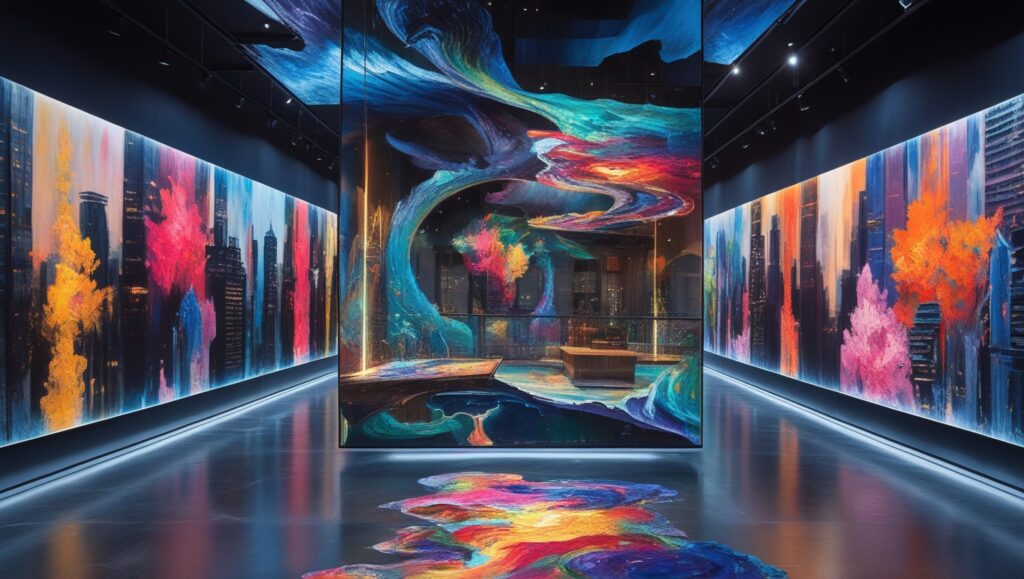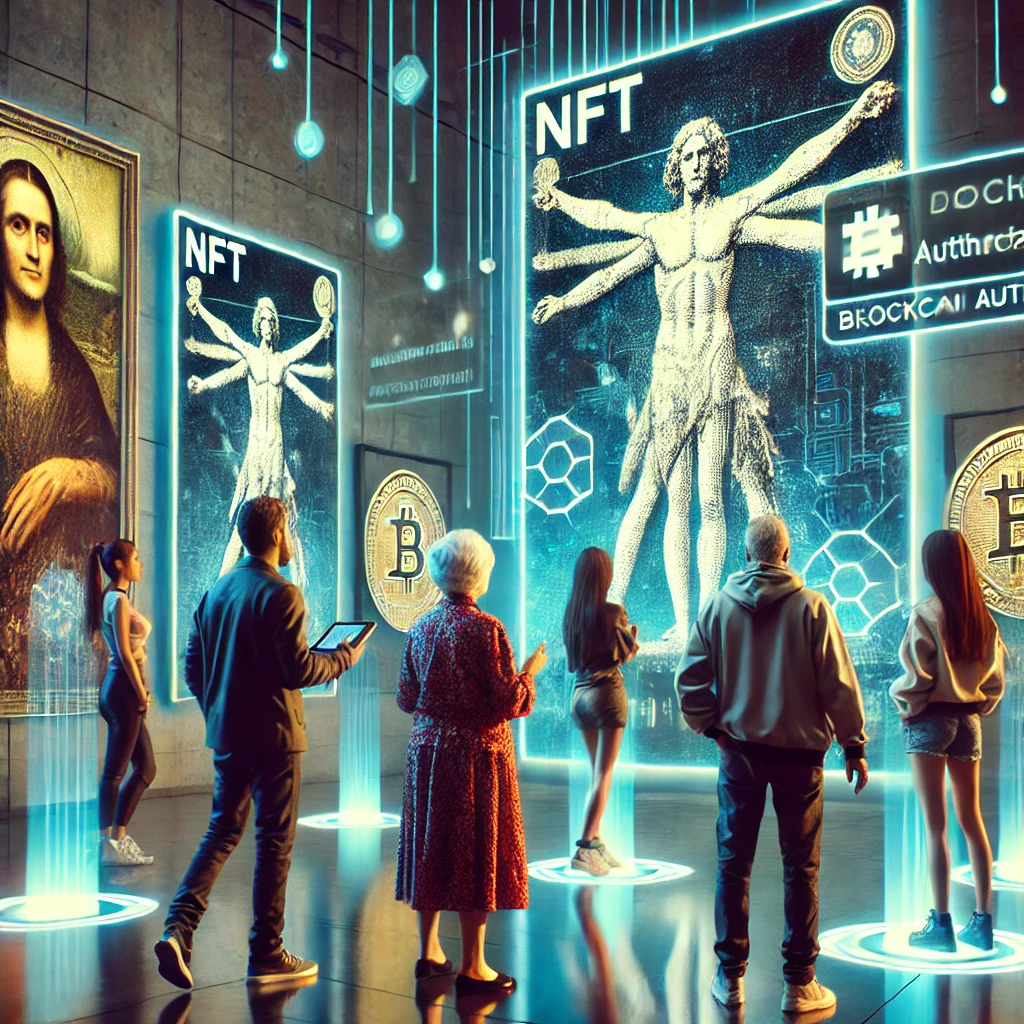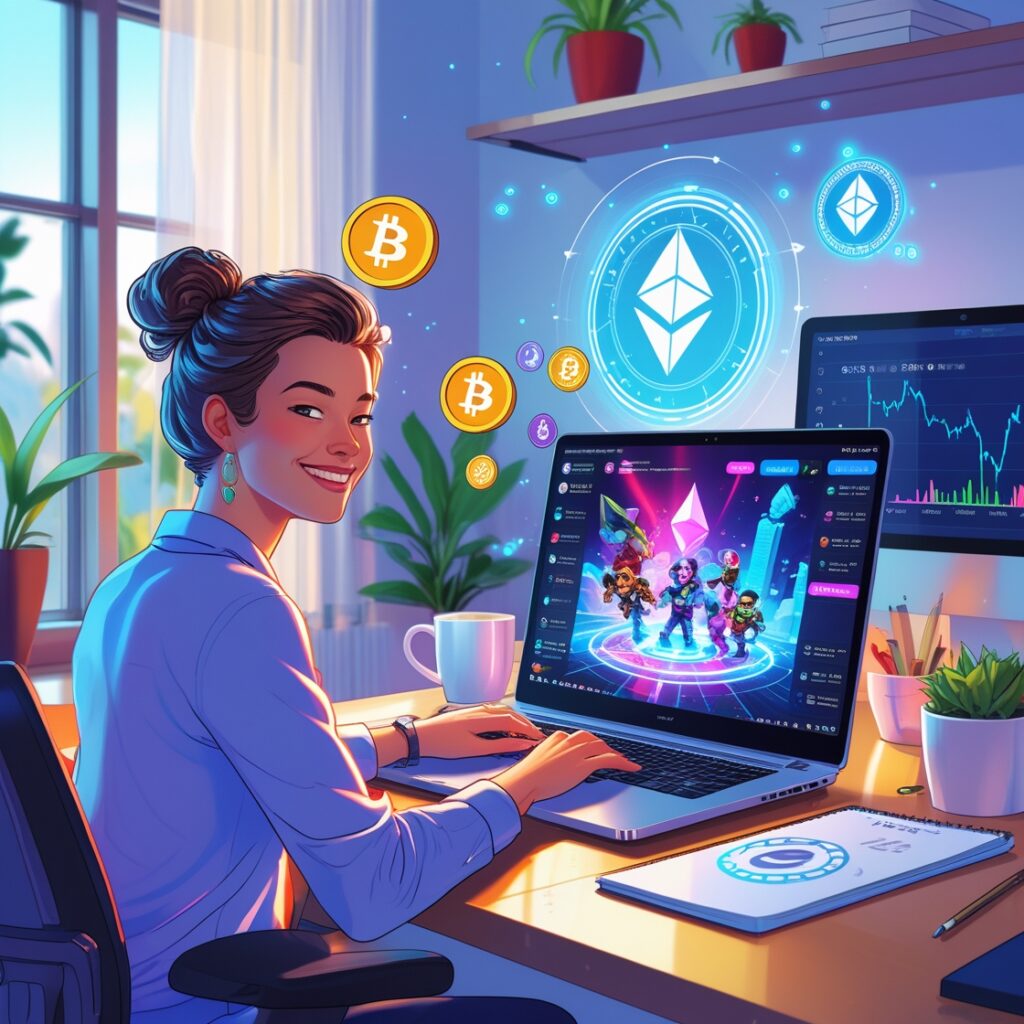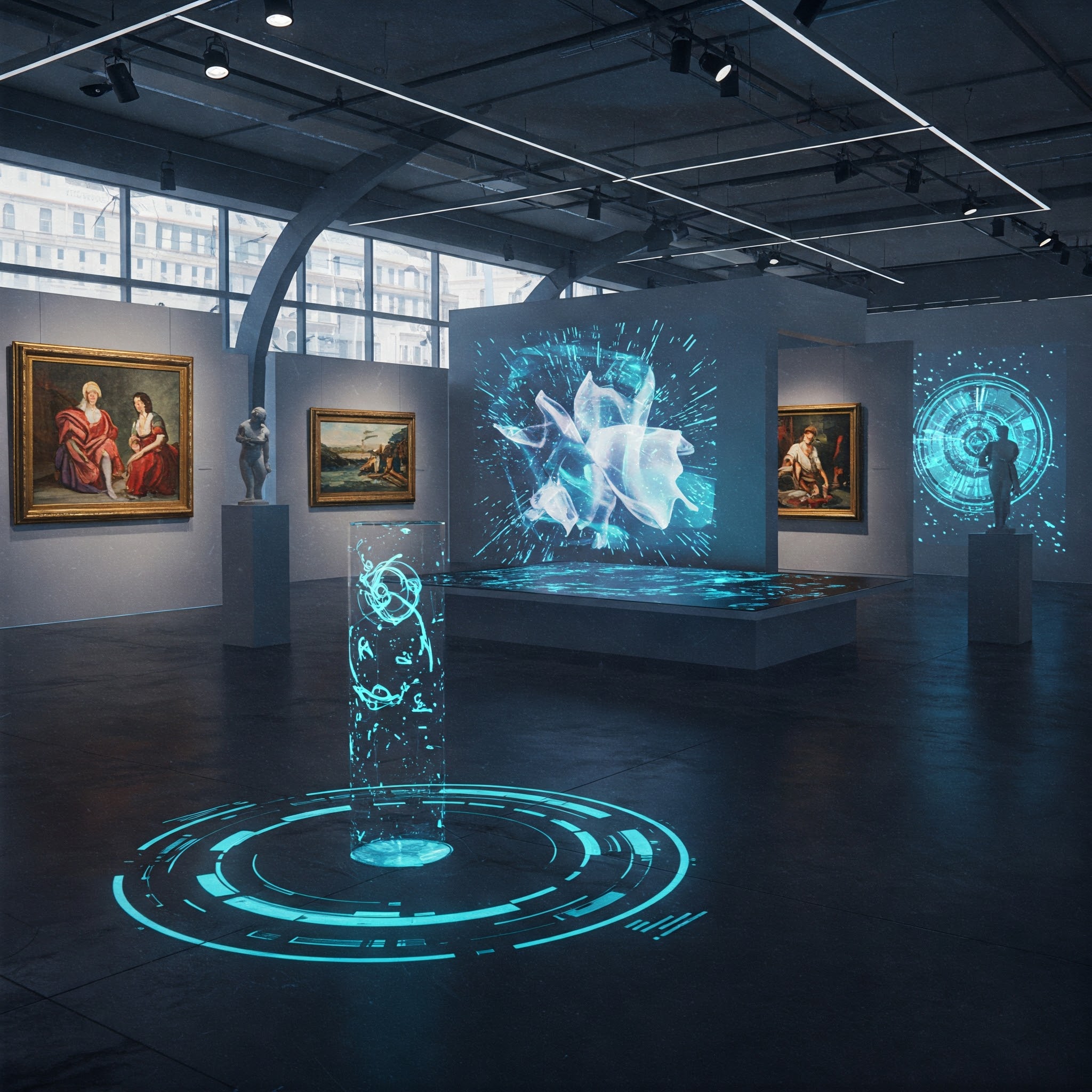
Back in 1995, I was explaining to my art gallery clients why they needed a website. Today, I’m having similar conversations about NFTs. The digital art world has come full circle, and boy, what a ride it’s been.
The Art Gallery That Changed My Mind
Let me share something that happened last summer at the Digital Art Forum in Miami. An artist friend sold a piece for $50,000 – not unusual for fine art, except this was completely digital. The buyer? A tech-savvy grandmother who had never bought crypto before. “I finally understand,” she told me, clutching her digital wallet information. “It’s not about the computer file; it’s about owning a piece of history.”
What Actually Makes an NFT?

Think of NFTs like digital baseball cards. Sure, anyone can print a Mickey Mantle rookie card, but the original? That’s where the value lies. Non-Fungible Tokens (NFTs) work similarly, except with unbreakable digital authentication.
Here’s what makes them tick:
The blockchain acts like a digital notary, keeping an unchangeable record of ownership. Each time an NFT changes hands, it’s like adding another certificate of authenticity to its history. I remember when we used to track provenance with paper trails – what a nightmare that was.
Beyond the Monkey Pictures
Look, I get it. When most people hear “NFT,” they think of those cartoon apes that were everywhere in 2021. But that’s like saying the internet is just for email. Here’s what’s really happening:
Concert tickets that can’t be scalped because they’re NFTs. Last month, I watched a major venue switch to NFT ticketing. Scalpers disappeared overnight.
Virtual real estate that companies are using for actual business. A client of mine runs her entire architecture practice through a virtual office she owns as an NFT.
Gaming items that players truly own. Remember selling World of Warcraft accounts on eBay? That’s stone age compared to what’s happening now.
The Reality Check
Here’s something most NFT articles won’t tell you: about 90% of the projects I see are garbage. Just like during the dot-com boom, everybody’s trying to cash in. But here’s what I tell my consulting clients: look for utility, not speculation.
The best NFT projects solve real problems:
- Authentication of luxury goods
- Royalty payments for artists
- Proof of attendance for events
- Digital identity verification
Where We’re Heading

Having witnessed the rise of the internet, mobile phones, and social media, I can tell you we’re at a similar inflection point with NFTs. But it’s not about the technology – it’s about what it enables.
Just last week, I sat with a group of musicians discussing NFT-based royalty systems. “For the first time,” one said, “I can actually track and get paid for every use of my music.” That’s the real revolution here.
Smart Ways to Approach NFTs
After three decades in digital technology, here’s my advice for approaching NFTs:
- Start with understanding, not buying. Spend time learning how they work.
- Focus on projects solving real problems, not just digital art.
- Think of NFTs as tools, not investments.
- Follow the builders, not the hype.
The Truth About Ownership
Here’s something crucial I learned the hard way: owning an NFT isn’t the same as owning copyright. It’s more like owning a signed print. You own that specific piece, but not the rights to reproduce it.
Looking Ahead
The future of NFTs isn’t in speculative art – it’s in boring but important things like property deeds, medical records, and digital identities. I’ve seen early versions of these systems, and they’re impressive.
Closing Thoughts

After 30 years in digital technology, I’ve learned to spot the difference between fads and fundamental shifts. NFTs represent the latter. They’re solving the digital ownership problem that’s existed since the first computer file was copied.
Remember: the real value of NFTs isn’t in what they are, but in what they enable. Just like nobody in 1995 predicted social media, we’re probably not even imagining the best uses of NFTs yet.
And that’s what makes this space so exciting.
